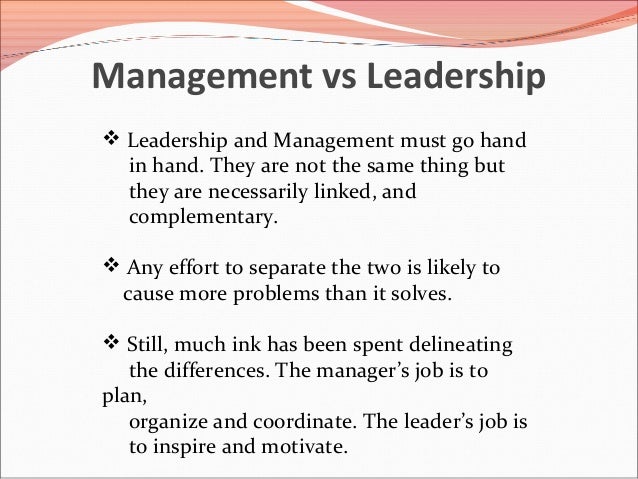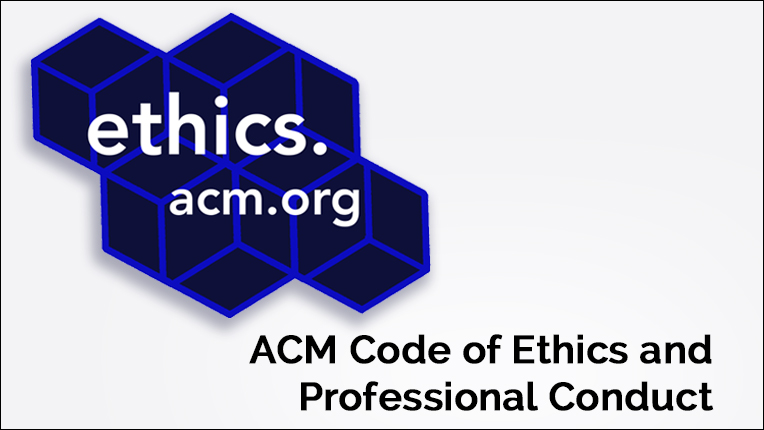PDF The purpose of this article is to define ethics, then critically examine its importance in business. In the process, I will research at least three peer-reviewed articles on the issue of.
- Business Ethics Managing Corporate Citizenship Pdf
- Managing Business Ethics 6th Edition Pdf
- Managing Business Ethics Trevino Pdf
- Understanding Business Ethics Pdf
- Includes suppliers, customers, the community and the natural environment. Finally, business ethics can also be applied at a micro-economic level, where the. Focus is on the moral dimensions of business practices, policies, behaviour. Decisions executed within an organisation.
- Calling “business ethics in the broadest sense” today, even if most scholars of business ethics could be said to assume as a starting point the basic legitimacy of private- sector markets for goods, services, labor, and capital, along with the legitimacy of government regulation of such markets.
Preface xv
Acknowledgments xix
Section I Introduction
1 Introducing Straight Talk about Managing Business Ethics: Where We’re Going and Why 2
Introduction 2
The Financial Disaster of 2008 4
Borrowing Was Cheap 4
Real Estate Became the Investment of Choice 5
Mortgage Originators Peddled “Liar Loans” 5

Banks Securitized the Poison and Spread It Around 6
Those Who Were Supposed to Protect Us Didn’t 7
Moving Beyond Cynicism 10
Can Business Ethics Be Taught? 14
Aren’t Bad Apples the Cause of Ethical Problems in Organizations? 15
Shouldn’t Employees Already Know the Difference between Right and Wrong? 16
Aren’t Adults’ Ethics Fully Formed and Unchangeable? 17
This Book is About Managing Ethics in Business 20
Ethics and the Law 21
Why Be Ethical? Why Bother? Who Cares? 22
Individuals Care about Ethics: The Motivation to Be Ethical 23
Employees Care about Ethics: Employee Attraction and Commitment 24
Managers Care about Ethics 25
Executive Leaders Care about Ethics 26
Industries Care about Ethics 26
Society Cares about Ethics: Business and Social Responsibility 27
The Importance of Trust 28
The Importance of Values 30
How This Book Is Structured 31
Conclusion 32
Discussion Questions 33
Exercise: Your Cynicism Quotient 34
Notes 35
Section II Ethics and the Individual
2 Deciding What’s Right: A Prescriptive Approach 38
Ethics and the Individual 38
Ethical Dilemmas 38
Prescriptive Approaches to Ethical Decision Making in Business 39
Eight Steps to Sound Ethical Decision Making in Business 53
Practical Preventive Medicine 59
Conclusion 62
Discussion Questions 62
Exercise: Clarifying Your Values 64
Introducing the Pinto Fires Case 64
Case: Pinto Fires 65
Short Cases 70
Notes 70
3 Deciding What’s Right: A Psychological Approach 72
Ethical Awareness and Ethical Judgment 72
Individual Differences, Ethical Judgment, and Ethical Behavior 76
Cognitive Moral Development 77
Locus of Control 84
Machiavellianism 85
Moral Disengagement 86
Facilitators of and Barriers to Good Ethical Judgment 88
Thinking about Fact Gathering 89
Thinking about Consequences 90
Thinking about Integrity 92
Thinking about Your Gut 94
Unconscious Biases 95
Emotions in Ethical Decision Making 96
Toward Ethical Action 99
Revisiting the Pinto Fires Case: Script Processing and Cost Benefit Analysis 104
Cost–Benefit Analysis 106
Conclusion 108
Exercise: Understanding Cognitive Moral Development 108
Discussion Questions 109
Short Case 109
Notes 110
4 Addressing Individuals’ Common Ethical Problems 114
Identifying Your Values—and Voicing Them 115
People Issues 118
Discrimination 118
Harassment, Sexual and Otherwise 122
Conflicts of Interest 126
What Is It? 126
How We Can Think about This Issue 130
Why Is It an Ethical Problem? 131
Customer Confidence Issues 132
What Is It? 132
How We Can Think about This Issue 136
Why Is It an Ethical Problem? 137
Use of Corporate Resources 137
What Is It? 137
How We Can Think about This Issue 142
Why Is It an Ethical Problem? 143
When all Else Fails: Blowing the Whistle 143
When Do You Blow the Whistle? 146
How to Blow the Whistle 146
Conclusion 151
Discussion Questions 151
Short Cases 152
Notes 153
Section III Managing Ethics in the Organization
5 Ethics as Organizational Culture 158
Introduction 158
Organizational Ethics as Culture 159
What Is Culture? 159
Strong versus Weak Cultures 159
How Culture Influences Behavior: Socialization and Internalization 160
Ethical Culture: A Multisystem Framework 161
Alignment of Ethical Culture Systems 162
Ethical Leadership 163
Executive Leaders Create Culture 163
Leaders Maintain or Change Organizational Culture 164
Other Formal Cultural Systems 174
Selection Systems 174
Values and Mission Statements 175
Policies and Codes 177
Orientation and Training Programs 179
Performance Management Systems 180
Organizational Authority Structure to Support Responsibility 182
Decision‐Making Processes 186
Informal Cultural Systems 187
Role Models and Heroes 188

Norms 189
Rituals 190
Myths and Stories 190
Language 191
Organizational Climates: Fairness, Benevolence, Self‐Interest, Principles 193
Developing and Changing the Ethical Culture 194
How an Ethical Culture Can Become an Unethical Culture 195
Becoming a More Ethical Culture 196
A Cultural Approach to Changing Organizational Ethics 199
Audit of the Ethical Culture 199
Cultural Systems View 199
A Long‐Term View 200
Assumptions about People 200
Diagnosis: The Ethical Culture Audit 201
Ethical Culture Change Intervention 203
The Ethics of Managing Organizational Ethics 204
Conclusion 205
Discussion Questions 205
Case: Culture Change at GM? 206
Case: Culture Change at Texaco 207
Case: An Unethical Culture in Need of Change: Tap Pharmaceuticals 209
Case: “Bad to the Bone” 211
Notes 213
6 Managing Ethics and Legal Compliance 218
Introduction 218
Structuring Ethics Management 218
Making Ethics Comprehensive and Holistic 222
Managing Ethics: The Corporate Ethics Office 222
Ethics and Compliance Officers 222
The Ethics Infrastructure 224
The Corporate Ethics Committee 225
Communicating Ethics 225
Basic Communications Principles 226
Evaluating the Current State of Ethics Communications 228
Multiple Communication Channels for Formal Ethics Communication 230
Interactive Approaches to Ethics Communication 232
Mission or Values Statements 235
Business Ethics Managing Corporate Citizenship Pdf
Organizational Policy 237
Codes of Conduct 238
Communicating Senior Management Commitment to Ethics 240
Formal and Informal Systems to Resolve Questions and Report Ethical Concerns 245
Using the Reward System to Reinforce the Ethics Message 248
Evaluating the Ethics Program 248
Surveys 248
Values or Compliance Approaches 249 Globalizing an Ethics Program 250
Conclusion 251
Discussion Questions 251
Short Case 252
Appendix: How Fines Are Determined under the U.S. Sentencing Guidelines 253
Notes 255
7 Managing for Ethical Conduct 257
Introduction 257
In Business, Ethics is about Behavior 257
Practical Advice for Managers: Ethical Behavior 258
Our Multiple Ethical Selves 258

The Kenneth Lay Example 259
The Dennis Levine Example 261
Practical Advice for Managers: Multiple Ethical Selves 261
Rewards and Discipline 262
People Do What Is Rewarded and Avoid Doing What Is Punished 262
People Will Go the Extra Mile to Achieve Goals Set by Managers 263
How Goals Combined with Rewards Can Encourage Unethical Behavior 264
Practical Advice for Managers: Goals, Rewards, and Discipline 265
Recognize the Power of Indirect Rewards and Punishments 266
Can Managers Really Reward Ethical Behavior? 268
What About the Role of Discipline? 269
Practical Advice for Managers: Discipline 271
People Follow Group Norms 272
“Everyone’s Doing It” 272
Rationalizing Unethical Behavior 273
Pressure to Go Along 273
Practical Advice for Managers: Group Norms 273
People Fulfill Assigned Roles 275
The Zimbardo Prison Experiment 275
Roles at Work 277
Conflicting Roles Can Lead to Unethical Behavior 277
Roles Can Also Support Ethical Behavior 278
Practical Advice for Managers: Roles 278
To Authority: People Do What They’re Told 278
The Milgram Experiments 279
Obedience to Authority at Work 281
Practical Advice for Managers: Obedience to Authority 282
Responsibility is Diffused in Organizations 282
“Don’t Worry—We’re Taking Care of Everything” 282
Diffusing Responsibility in Groups 283
Diffusing Responsibility by Dividing Responsibility 284
Diffusing Responsibility by Creating Psychological Distance 285
Practical Advice for Managers: Personal Responsibility 286
Stressed‐Out Employees are More Unethical 286
Practical Advice for Managers: Stress 287
Conclusion 287
Am I Walking My Ethical Talk? 287
Discussion Questions 288
Case: Sears, Roebuck, and Co.: The Auto Center Scandal 289 Short Case 291
Notes 292
8 Ethical Problems of Managers 295
Introduction 295
Managers and Employee Engagement 295
Managing the “Basics” 298
Hiring and Work Assignments 298
Performance Evaluation 300
Discipline 303
Terminations 305
Why Are These Ethical Problems? 307
Costs 308
Managing a Diverse Workforce 308
Diversity 309
Harassment 311
Family and Personal Issues 312
Why Are These Ethical Problems? 315
Costs 315
The Manager as a Lens 315
The Buck Stops with Managers 316
Managers Are Role Models 319
Managing Up and Across 319
Honesty Is Rule One 320
Standards Go Both Ways 321
Conclusion 322
Discussion Questions 322
Short Cases 323
Notes 324
Section IV Organizational Ethics and Social Responsibility
9 Corporate Social Responsibility 326
Introduction 326
Why Corporate Social Responsibility? 326
Types of Corporate Social Responsibility 334
Economic Responsibilities 334
Legal Responsibilities 335
Ethical Responsibilities 335
Philanthropic Responsibilities 336
Triple Bottom Line and Environmental Sustainability 339
Is Socially Responsible Business Good Business? 343
The Benefit of a Good Reputation 344
Socially Responsible Investors Reward Social Responsibility 344
The Cost of Illegal Conduct 345
The Cost of Government Regulation 346
What the Research Says about Social Responsibility and Firm Performance 349
Being Socially Responsible Because It’s the Right Thing to Do 352
Managing Business Ethics 6th Edition Pdf
Conclusion 354
Discussion Questions 354
Case: Merck and River Blindness 355
Short Case 357
Notes 357
10 Ethical Problems of Organizations 362
Introduction 362
Managing Stakeholders 363
Key Stakeholder Groups 365
Ethics and Consumers 365
Ethics and Employees 369
Ethics and Shareholders 371
Managing Business Ethics Trevino Pdf
Ethics and the Community 372
Key Ethical Issues Involving Multiple Stakeholders 373
Product Safety 373
Pricing Issues for Prescription Medications 378
Environmental Catastrophes 380
Additional Environmental Bombshells 381
Why Are These Ethical Issues? 382
Costs 382
Classic Ethics Cases 383
First: The Less-than-Ideal Examples 383
Models to Consider and Admire 388
Conclusion 390
Short Cases 391
Discussion Questions 395
Notes 395
11 Managing for Ethics and Social Responsibility in a Global Environment 399
Introduction 399
Focus on the Individual Expatriate Manager 399
The Difficulties of Foreign Business Assignments 400
The Need for Structure,Training, and Guidance 400
Foreign Language Proficiency 401
Learning about the Culture 401
Recognizing the Power of Selective Perception 403
Assumption of Behavioral Consistency 404
Assumption of Cultural Homogeneity 404
Assumption of Similarity 405
How Different Are Ethical Standards in Different Cultures—Really? 412
Development of Corporate Guidelines and Policies for Global Business Ethics 414
The Organization in a Global Business Environment 418
Deciding to Do Business in a Foreign Country 418
Development of a Transcultural Corporate Ethic 428
Conclusion 431
Discussion Questions 432
Short Case 433
Case: Selling Medical Ultrasound Technology in Asia 433
Case: Google Goes to China 436
Notes 441
Understanding Business Ethics Pdf
Index 447